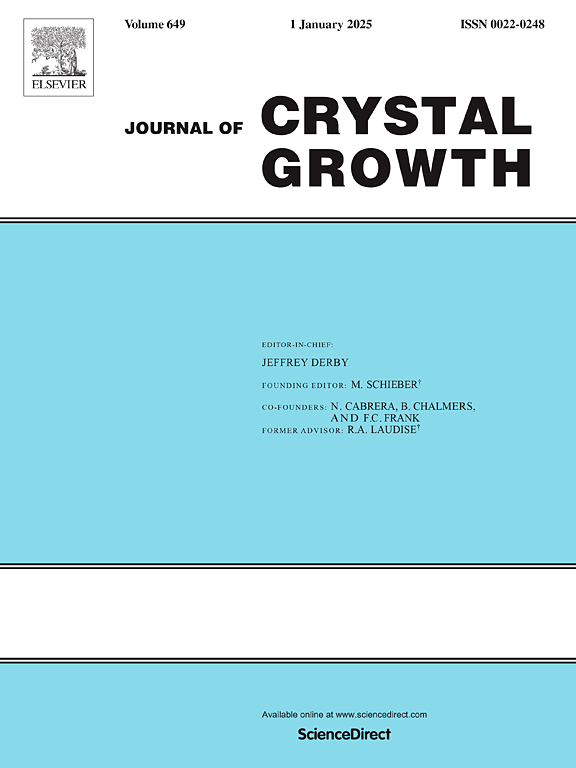Cs3Cu2I5晶体是否为快衰闪烁体?
IF 1.7
4区 材料科学
Q3 CRYSTALLOGRAPHY
引用次数: 0
摘要
零维钙钛矿Cs3Cu2I5晶体作为一种新型的高性能闪烁体近年来得到了广泛的研究。然而,在不同的报道中,闪烁衰减时间(微秒尺度和纳秒尺度)存在明显的矛盾,这使得人们对晶体的内在特性和应用潜力产生了混淆。为了消除这种混淆,采用垂直布里奇曼法和水溶液法生长了Cs3Cu2I5单晶,并对其闪烁特性进行了研究和比较。尽管晶体质量存在差异,但两种方法生长的样品均表现出占主导地位的慢衰成分,平均衰减时间约为880 ns,时间性质无显著差异。这一结果与之前的大多数报告一致,表明Cs3Cu2I5晶体更可能是一种慢衰闪烁体,与最近声称的快衰行为相反。其缓慢的衰减特性也与其自俘获激子(STE)发光机制相一致。本文章由计算机程序翻译,如有差异,请以英文原文为准。
Whether Cs3Cu2I5 crystal is a fast-decaying scintillator?
The zero-dimensional perovskite Cs3Cu2I5 crystal has been widely investigated as a novel high performance scintillator in recent years. However, there is an obvious contradiction on the scintillation decay time (microsecond-scale vs. nanosecond-scale) in different reports, which causes confusion on the intrinsic properties of the crystal as well as its application potentials. In order to dispel the confusion, Cs3Cu2I5 single crystals were grown by both the vertical Bridgman and aqueous solution methods and their scintillation properties were investigated and compared. Despite differences in crystal quality, all samples grown by both methods exhibit a dominant slow-decaying component with an average decay time of about 880 ns, without significant difference in the timing property. This result is consistent with most of the previous reports, indicating that Cs3Cu2I5 crystal is more probably a slow-decaying scintillator, contrary to recent claims of fast-decaying behavior. The slow decaying characteristic is also consistent with its self-trapped excitons (STE) luminescence mechanism.
求助全文
通过发布文献求助,成功后即可免费获取论文全文。
去求助
来源期刊

Journal of Crystal Growth
化学-晶体学
CiteScore
3.60
自引率
11.10%
发文量
373
审稿时长
65 days
期刊介绍:
The journal offers a common reference and publication source for workers engaged in research on the experimental and theoretical aspects of crystal growth and its applications, e.g. in devices. Experimental and theoretical contributions are published in the following fields: theory of nucleation and growth, molecular kinetics and transport phenomena, crystallization in viscous media such as polymers and glasses; crystal growth of metals, minerals, semiconductors, superconductors, magnetics, inorganic, organic and biological substances in bulk or as thin films; molecular beam epitaxy, chemical vapor deposition, growth of III-V and II-VI and other semiconductors; characterization of single crystals by physical and chemical methods; apparatus, instrumentation and techniques for crystal growth, and purification methods; multilayer heterostructures and their characterisation with an emphasis on crystal growth and epitaxial aspects of electronic materials. A special feature of the journal is the periodic inclusion of proceedings of symposia and conferences on relevant aspects of crystal growth.
 求助内容:
求助内容: 应助结果提醒方式:
应助结果提醒方式:


